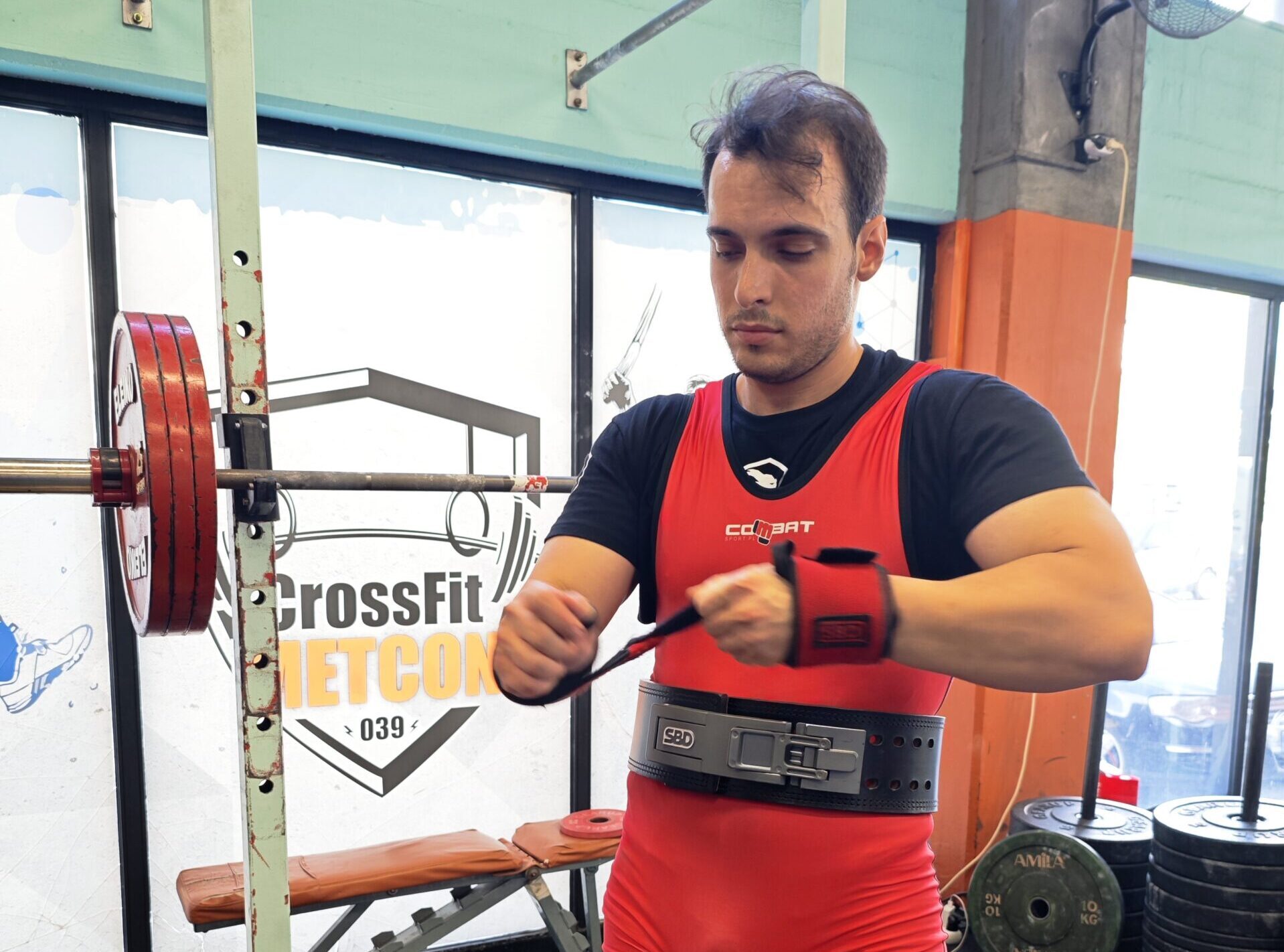Understanding Eccentric Muscle Actions
Eccentric muscle contractions are fundamental yet often misunderstood components of resistance training. These contractions occur during the lengthening phase of a movement, where muscles elongate while generating force—typically seen during the lowering portion of an exercise.
The Role of Eccentric Actions in Strength Development
Load-Velocity Dynamics
A cornerstone concept in strength training is the load-velocity relationship, which reflects the inverse correlation between resistance and movement speed. In disciplines such as powerlifting, this principle is evident during maximal lifts. As the load nears an individual’s one-repetition maximum (1RM), movement speed inherently slows due to basic laws of physics, including inertia and force output capacity.
This deceleration becomes especially apparent during the final, heaviest attempt in competitio ,usually the third lift ,where athletes must sustain form under significantly slower bar velocities. High-level lifters differentiate themselves by maintaining biomechanical efficiency and force output despite these extremely slow movements, a skill not typically found in novice athletes.
Practical Takeaways for Strength-Oriented Trainees
The application of eccentric principles yields several crucial insights for strength development:
- The eccentric phase should be performed with enough control to preserve mechanical integrity, setting up an effective transition to the concentric phase. Overly slow descents do not enhance strength gains and may actually hinder performance through premature fatigue.
- The concentric phase should always be executed with maximal intent to accelerate, regardless of the visible speed. This effort stimulates greater neural adaptations related to force production.
- Prescribing artificial slow tempos lacks efficacy for maximizing strength. Natural deceleration under heavy loads already provides sufficient eccentric stress, making slow tempo protocols redundant.
Eccentric Strategies for Hypertrophy
Misunderstandings in the Bodybuilding World
Within hypertrophy-focused training, eccentric techniques are often exaggerated or misapplied. Many traditional bodybuilding routines recommend controlled 3–5 second eccentrics, based on a few widespread but flawed assumptions:
- That longer time under tension (TUT) automatically equates to more muscle growth.
- That eccentric movements produce greater muscle damage, leading to better hypertrophic outcomes.
- That historical bodybuilding success validates these methods.
Although these claims contain partial truths, a closer look at the science reveals a more nuanced understanding.
Why Excessively Slow Eccentrics Fall Short
There are several limitations to relying heavily on slow eccentric training for hypertrophy:
- Muscles are capable of producing 20–40% more force during eccentric movements than concentric ones. However, standard equipment generally restricts loading to what can be lifted concentrically, nullifying the advantage of supramaximal eccentric capabilities unless specialized techniques are used.
- TUT alone is insufficient for stimulating hypertrophy. Force magnitude ,how much tension a muscle experiences ,is more important than the duration it’s under load.
- The concept of impulse (force × time) is a better predictor of growth than time under tension alone. Emphasizing tempo over force leads to suboptimal stimulus.
What the Evidence Shows
Recent research supports more effective approaches:
- Comparative studies have found that heavier loads yield greater hypertrophic stimulus, even when time under tension is shorter. For example, training at 70% of 1RM produced 25% more impulse than training at 35%, despite requiring fewer reps.
- Meta-analyses indicate that repetitions lasting under 10 seconds produce similar muscle growth. Ultra-slow reps (>10 seconds) may even hinder gains.
- Slow concentric actions have been shown to impair strength development. Training with maximal concentric intent leads to significantly better improvements in strength outcomes (Roig et al., 2009).
Exploring Supramaximal Eccentric Training
The Concept and Its Challenges
The rationale for using supramaximal eccentric loads, exceeding one’s concentric 1RM, is sound in theory, given the greater force-generating capacity during eccentrics. Yet practical execution is fraught with challenges:
- Most free-weight exercises are not easily adaptable for supramaximal eccentric loading without help from advanced equipment or highly skilled spotters.
- Meta-analytic findings suggest no clear advantage for either hypertrophy or strength outcomes when compared to traditional methods (Roig et al., 2009).
- This approach is associated with increased muscle soreness, damage, and recovery demands, which could interfere with long-term performance and adaptation.
When It May Be Useful
Despite these concerns, supramaximal eccentric training may have value in specific contexts:
- For advanced lifters or individuals in rehabilitation, carefully controlled use under expert supervision could provide a novel stimulus and help overcome adaptation plateaus.
- There is limited but emerging evidence for benefits in tendon adaptation and injury prevention, suggesting possible applications for athletes managing specific soft tissue conditions.
Still, for most recreational and competitive lifters, the costs and logistical difficulties of supramaximal eccentrics outweigh the potential benefits.
Actionable Recommendations
Guidelines for Strength-Focused Athletes
- Prioritize maintaining biomechanical precision during the eccentric phase, but do not overextend the lowering period. Let the load itself dictate the tempo.
- Train regularly with near-maximal weights to develop the coordination and effort required to perform slow, grinding lifts in competition.
- Avoid unnecessary complexity. Proven methods like progressive overload and specific lift practice yield more consistent strength gains.
Guidelines for Hypertrophy-Oriented Trainees
- Use moderate eccentric tempos (around 2–3 seconds) that allow sufficient loading without overly reducing reps or total volume.
- Focus on increasing mechanical tension via progressive loading and total volume, rather than manipulating tempo alone.
- Keep eccentric phases active,resist gravity rather than simply lowering the weight passively. Muscular engagement should be maintained throughout.
Universal Training Principles
- Always remain in control during the eccentric movement; muscle engagement, not gravity, should dictate motion.
- Emphasize quality of muscular tension over arbitrary tempo counts. Strength and growth are outcomes of effective mechanical stress.
- For compound lifts, use the eccentric phase to optimize positioning and transition to an effective concentric phase.
- Remember that intensity ,actual load ,drives most adaptations. Heavier weights, handled with control and proper form, consistently outperform lighter weights lifted slowly.
Conclusion
Eccentric training offers a valuable, though frequently misapplied, avenue for improving both strength and hypertrophy. While controlled lowering phases are important, deliberately slowing them adds little benefit and can reduce total training effectiveness.
Heavy loads create sufficient eccentric stimulus naturally. Specialized methods like supramaximal eccentric training may benefit certain advanced individuals but are largely impractical and unnecessary for most.
Ultimately, successful eccentric training comes down to applying heavy, progressive loads with sound technique through a full range of motion. There’s no need for elaborate tempo strategies, just smart programming and consistent effort.
The bottom line? Don’t overthink eccentric training. Focus on lifting well, progressing gradually, and letting the weight and physics ,guide the appropriate tempo.
References
- Garhammer, J., A review of power output studies of Olympic and powerlifting: Methodology, performance prediction, and evaluation tests. J Strength Cond Res, 1993. 7(2): p. 76–89.
- Zourdos, M.C., et al., Novel Resistance Training-Specific RPE Scale Measuring Repetitions in Reserve. J Strength Cond Res, 2016. 30(1): p. 267-75.
- Roig, M., et al., The effects of eccentric versus concentric resistance training on muscle strength and mass in healthy adults: a systematic review with meta-analysis. Br J Sports Med, 2009. 43(8): p. 556–68.
- Mohamad, N.I., J.B. Cronin, and K.K. Nosaka, Difference in kinematics and kinetics between high- and low-velocity resistance loading equated by volume: implications for hypertrophy training. J Strength Cond Res, 2012. 26(1): p. 269–75.
- Headley, S.A., et al., Effects of lifting tempo on one repetition maximum and hormonal responses to a bench press protocol. J Strength Cond Res, 2011. 25(2): p. 406–13.
- Westcott, W.L., et al., Effects of regular and slow speed resistance training on muscle strength. J Sports Med Phys Fitness, 2001. 41(2): p. 154–8.
- Hunter, G.R., D. Seelhorst, and S. Snyder, Comparison of metabolic and heart rate responses to super slow vs. traditional resistance training. J Strength Cond Res, 2003. 17(1): p. 76–81.
- Kim, E., et al., Effects of 4 weeks of traditional resistance training vs. superslow strength training on early phase adaptations in strength, flexibility, and aerobic capacity in college-aged women. J Strength Cond Res, 2011. 25(11): p. 3006–13.
- Keeler, L.K., et al., Early-phase adaptations of traditional-speed vs. superslow resistance training on strength and aerobic capacity in sedentary individuals. J Strength Cond Res, 2001. 15(3): p. 309–314.
- Neils, C.M., et al., Influence of contraction velocity in untrained individuals over the initial early phase of resistance training. J Strength Cond Res, 2005. 19(4): p. 883–887.
- Shepstone, T.N., et al., Short-term high- vs. low-velocity isokinetic lengthening training results in greater hypertrophy of the elbow flexors in young men. J Appl Physiol, 2005. 98(5): p. 1768–1776.
- Schoenfeld, B.J., D.I. Ogborn, and J.W. Krieger, Effect of repetition duration during resistance training on muscle hypertrophy: a systematic review and meta-analysis. Sports Med, 2015. 45(4): p. 577–85.
- Gonzalez-Badillo, J.J., et al., Maximal intended velocity training induces greater gains in bench press performance than deliberately slower halfvelocity training. Eur J Sport Sci, 2014.
- (8): p. 772–81. 14. Lim, H.Y., Wong, S.H., Effects of isometric, eccentric, or heavy slow resistance exercises on pain and function in individuals with patellar tendinopathy: A systematic review. Physiother Res Int, 2018. 23(4): p. E1721.
- Schoenfeld, B.J., et al., Hypertrophic effects of concentric vs. eccentric muscle actions: a systematic review and meta-analysis. J Strength Cond Res, 2017. 31(9): p. 2599–608.
- Buskard, A.N., Gregg, H.R., Ahn, S., Supramaximal Eccentrics Versus Traditional Loading in Improving Lower-Body 1RM: A Meta-Analysis. Res Q Exerc Sport, 2018. 89(3): p. 340–6.




